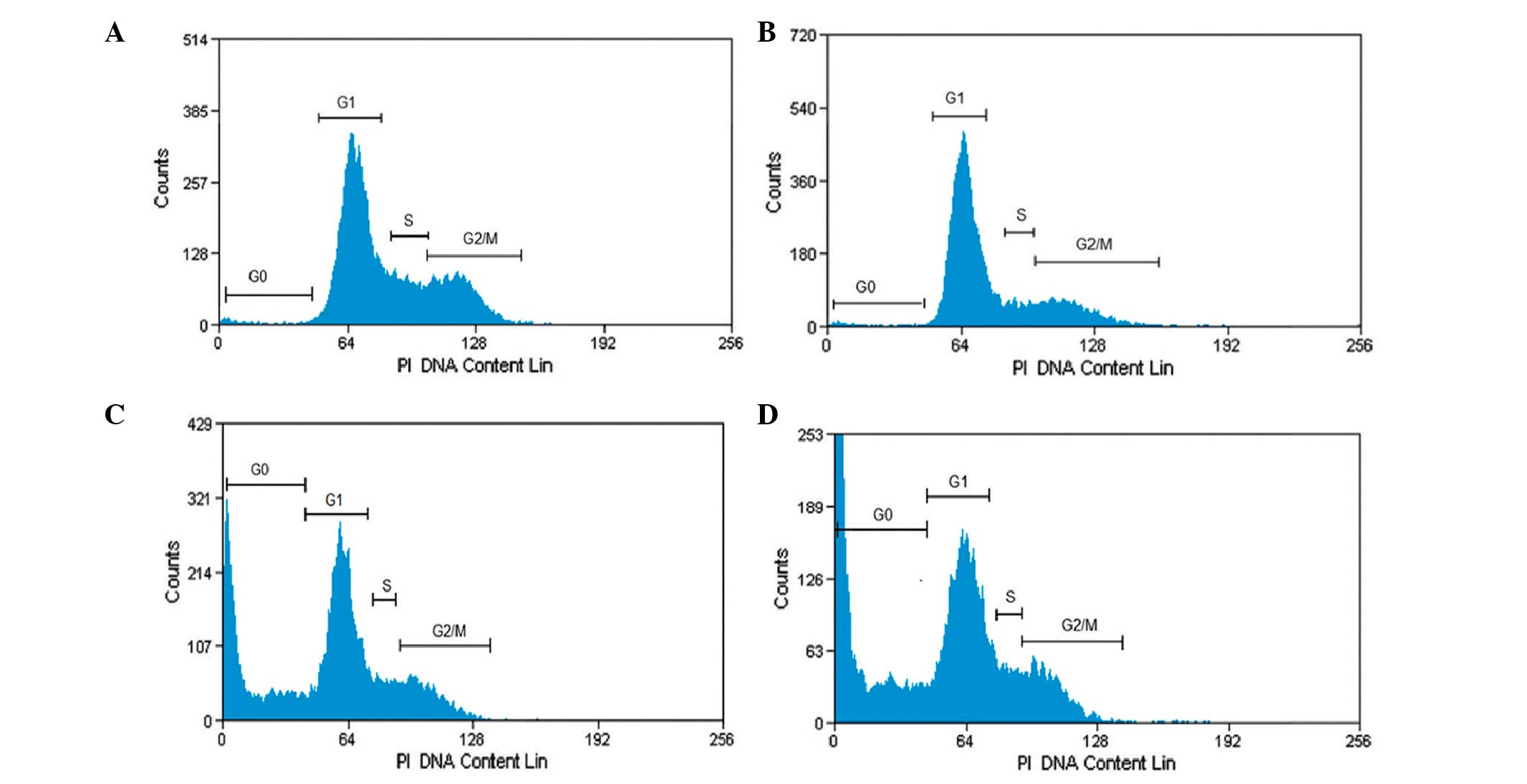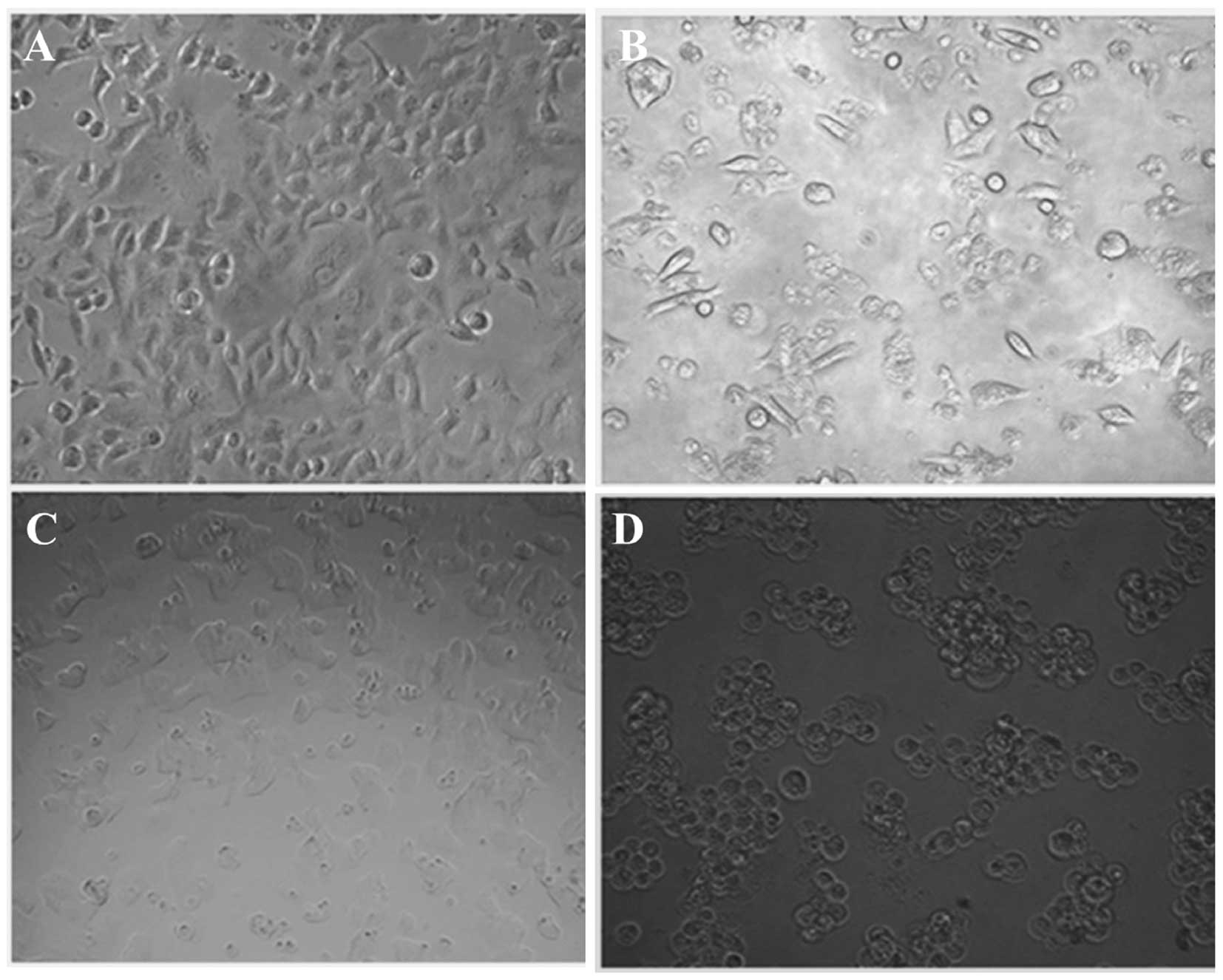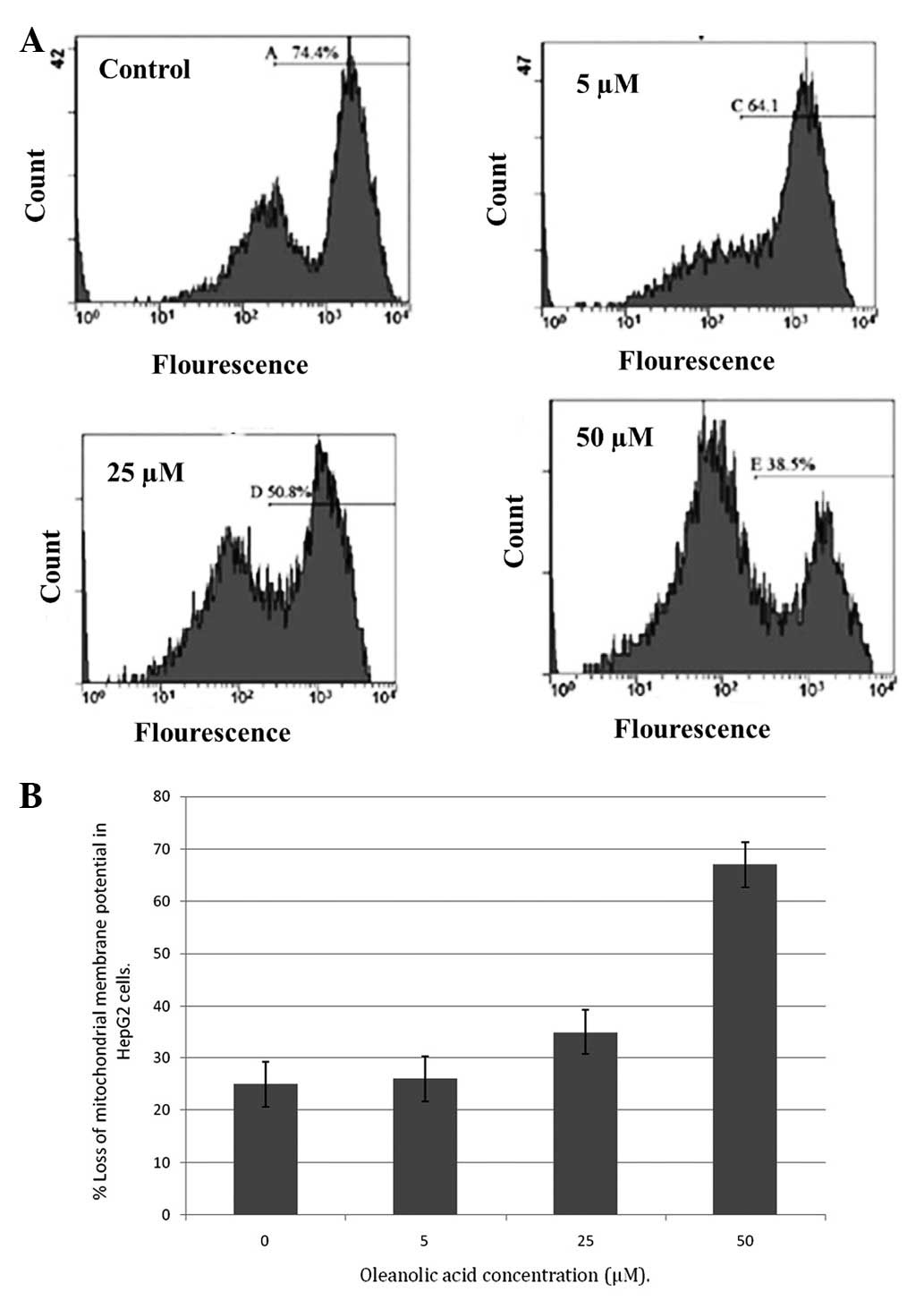Anticancer and apoptotic activities of oleanolic acid are mediated through cell cycle arrest and disruption of mitochondrial membrane potential in HepG2 human hepatocellular carcinoma cells
Retraction in: /10.3892/mmr.2021.12079
- Authors:
- Published online on: July 2, 2015 https://doi.org/10.3892/mmr.2015.4033
- Pages: 5012-5018
-
Copyright: © Zhu et al. This is an open access article distributed under the terms of Creative Commons Attribution License.
Metrics: Total
Views: 0 (Spandidos Publications: | PMC Statistics: )
Total PDF Downloads: 0 (Spandidos Publications: | PMC Statistics: )
Abstract
Hepatocellular carcinoma (HCC) is an aggressive form of cancer, with high rates of morbidity and mortality, a poor prognosis and limited therapeutic options. The objective of the present study was to demonstrate the anticancer activity of oleanolic acid in HepG2 human HCC cells. Cell viability was evaluated using an MTT assay, following administration of various doses of oleanolic acid. The effect of oleanolic acid on cell cycle phase distribution and mitochondrial membrane potential was evaluated using flow cytometry with propidium iodide and rhodamine‑123 DNA‑binding cationic fluorescent dyes. Fluorescence microscopy was employed to detect morphological changes in HepG2 cells following oleanolic acid treatment. The results revealed that oleanolic acid induced a dose‑dependent, as well as time‑dependent inhibition in the growth of HepG2 cancer cells. Following acridine orange and ethidium bromide staining, treatment with various doses (0, 5, 25 and 50 µM) of oleanolic acid induced typical morphological changes associated with apoptosis, including cell shrinkage, membrane blebbing, nuclear condensation and apoptotic body formation. Cell cycle analysis revealed that oleanolic acid induced cell cycle arrest in HepG2 cells at the sub‑G1 (apoptotic) phase of the cell cycle, in a dose‑dependent manner. Staining with Annexin V‑fluorescein isothiocyanate and propidium iodide revealed that apoptosis occurred early in these cells. Oleanolic acid treatment also resulted in fragmentation of nuclear DNA in a dose‑dependent manner, producing the typical features of DNA laddering on an agarose gel. The results also demonstrated that oleanolic acid treatment resulted in a potent loss of mitochondrial membrane potential, which also occurred in a dose‑dependent manner. Therefore, oleanolic acid may be used as a therapeutic agent in the treatment of human HCC.

















